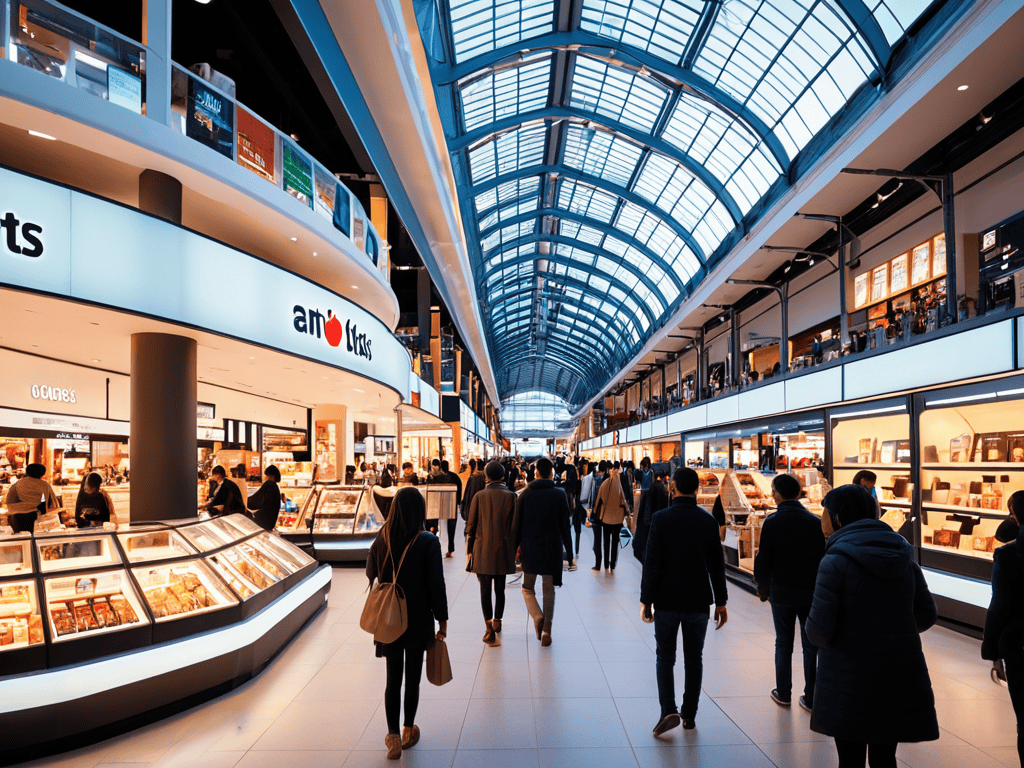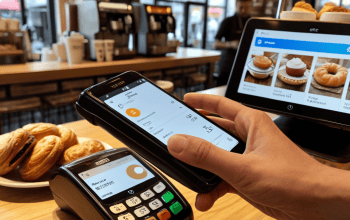I still remember the day my family’s bed and breakfast finally went online, thanks to E-commerce technology. It was like unlocking a treasure trove of new customers and possibilities! However, as I delved deeper into the world of online commerce, I realized that there’s a lot of hype surrounding it. Everyone claims to have the secret sauce, the magic formula that will make your online business skyrocket. But let’s be real, most of it is just fluff. As someone who’s been in the trenches, I’ve seen how E-commerce technology can be both a blessing and a curse.
In this article, I promise to cut through the noise and provide you with no-nonsense advice on how to harness the power of E-commerce technology for your business. I’ll share my personal experiences, the lessons I’ve learned, and the practical tips that have helped my family’s business thrive online. My goal is to help you navigate the complex world of E-commerce with confidence, and to show you how to use technology to elevate your customer experience. Whether you’re just starting out or looking to take your business to the next level, I’m committed to providing you with honest and actionable insights that will help you succeed in the ever-changing landscape of online commerce.
Table of Contents
- E Commerce Technology Unveiled
- Weaving the Digital Souk
- Personalized Experiences Supply Chain Optimization Strategies
- Secure Transactions the Rhythm of Digital Payments
- Navigating the Digital Bazaar: 5 Essential Tips for E-commerce Technology
- E-commerce Insights to Treasure
- Embracing the Digital Horizon
- Embracing the Future of E-commerce
- Frequently Asked Questions
E Commerce Technology Unveiled

As I delved into the world of online shopping, I discovered how artificial intelligence in e-commerce is revolutionizing the way businesses interact with their customers. It’s fascinating to see how AI-powered chatbots can provide personalized support, helping shoppers find exactly what they need. I recall a recent trip to Tokyo, where I stumbled upon a small boutique that had implemented a remarkable mobile commerce trend – allowing customers to purchase items directly from their smartphones, using digital payment security measures that ensured a seamless and secure transaction.
My experience with e-commerce platform comparison has taught me that each platform has its unique strengths and weaknesses. Some excel in supply chain optimization strategies, while others focus on creating a personalized customer experience. As someone who’s passionate about cultural immersion, I appreciate how e-commerce platforms can be tailored to cater to diverse customer needs, much like how a local market adapts to the preferences of its community.
As I delve deeper into the world of e-commerce technology, I’ve found that one of the most significant challenges is navigating the complex landscape of digital payments and security. To help you streamline your online transactions, I recommend exploring resources that offer a comprehensive overview of secure payment gateways and their integration with various e-commerce platforms. For instance, I recently stumbled upon a fascinating platform, sexbayern, which, although not directly related to e-commerce, got me thinking about the importance of user experience in any digital interaction. By focusing on creating seamless and intuitive experiences, whether in e-commerce or other online endeavors, we can build trust and loyalty with our customers, ultimately driving business growth and success.
In my travels, I’ve noticed how e-commerce has become an integral part of daily life, especially in bustling cities like Seoul or Mumbai. The rise of mobile commerce has enabled small businesses to reach a global audience, and it’s exciting to see how digital payment security measures are being implemented to protect both buyers and sellers. As I continue to explore the world of e-commerce, I’m eager to learn more about the innovative strategies being used to enhance the online shopping experience, and how they can be applied to create a more personalized customer experience.
Artificial Intelligence the Hidden Merchant
As I delve into the world of e-commerce, I’m reminded of the vibrant markets I’ve encountered on my travels. Artificial intelligence is now the unseen force behind many online transactions, quietly personalizing our shopping experiences.
In this digital souk, machine learning algorithms are the new merchants, adeptly predicting our desires and offering tailored recommendations, much like the skilled vendors I’ve met in my journeys, who seem to know exactly what treasure to offer a curious traveler like myself.
Mobile Commerce Trends Dancing With Devices
As I reflect on my travels, I’ve noticed how mobile commerce has become an integral part of our daily lives, especially when exploring new destinations. I recall attempting to learn a traditional dance in a small village, where the locals were more interested in showing me their mobile payment systems than teaching me the steps.
In this era of digital wanderlust, seamless transactions are crucial for travelers, allowing us to focus on immersing ourselves in local cultures rather than worrying about payment methods.
Weaving the Digital Souk

As I delve into the world of online marketplaces, I’m reminded of the vibrant souks I’ve had the privilege to explore during my travels. The digital souk is a marvel, where artificial intelligence in e-commerce has become the unseen merchant, catering to our every need with personalized recommendations and streamlined services. It’s fascinating to see how this technology has transformed the way we shop, making it a seamless and intuitive experience.
My adventures have taken me to various corners of the globe, where I’ve witnessed the impact of mobile commerce trends on local businesses. From the bustling streets of Marrakech to the trendy cafes of Tokyo, it’s clear that mobile devices have become an essential tool for merchants and consumers alike. As I reflect on my experiences, I realize that the key to success lies in creating a personalized customer experience, one that resonates with the unique cultural context of each region.
In the digital souk, digital payment security measures play a vital role in ensuring a safe and trustworthy environment for transactions. As a cultural travel consultant, I’ve seen firsthand how supply chain optimization strategies can make or break a business, particularly in the context of e-commerce. By embracing these innovations, entrepreneurs can focus on crafting a truly immersive experience for their customers, much like the captivating stories and dances that bring people together in the traditional souks I’ve grown to love.
Personalized Experiences Supply Chain Optimization Strategies
As I delve into the world of e-commerce, I’m reminded of my travels to bustling markets, where each vendor offers a unique experience. In the digital realm, personalized experiences can be achieved through supply chain optimization strategies that cater to individual customers’ needs. This approach enables businesses to stand out in a crowded online marketplace.
By leveraging data and analytics, companies can create tailored experiences that resonate with their target audience, much like a local artisan crafts a bespoke item. Streamlined logistics play a crucial role in this process, ensuring that products are delivered efficiently and effectively, thereby enhancing the overall customer experience.
Secure Transactions the Rhythm of Digital Payments
As I’ve traveled the world, I’ve noticed that secure transactions are the backbone of any successful e-commerce platform. Whether I’m shopping for local handicrafts in a Moroccan medina or booking a hotel room in Tokyo, I want to know that my financial information is protected. This sense of security is what allows us to fully immerse ourselves in the online shopping experience, exploring new products and services without worrying about the safety of our data.
In my experience, digital payment gateways have revolutionized the way we make online transactions, providing a seamless and trustworthy experience for both buyers and sellers. By using encryption and other security measures, these gateways ensure that our sensitive information remains confidential, allowing us to focus on the thrill of discovery and the joy of connecting with others across the globe.
Navigating the Digital Bazaar: 5 Essential Tips for E-commerce Technology
- I’ve learned from my travels that a seamless user experience is key, so ensure your website is optimized for mobile devices to capture the wandering shopper
- Having helped my family’s bed and breakfast go digital, I can attest that integrating artificial intelligence for personalized product recommendations can be a game-changer
- Secure transactions are the rhythm that keeps the digital souk alive, so invest in robust security measures to protect your customers’ sensitive information
- I’ve seen how supply chain optimization can make or break a business, so focus on streamlining your logistics to ensure timely and efficient delivery of products
- From my adventures in cultural immersion, I know that understanding your target audience is crucial, so leverage data analytics to gain insights into consumer behavior and preferences, allowing you to tailor your e-commerce strategy for maximum impact
E-commerce Insights to Treasure
I’ve learned that embracing e-commerce technology can be a powerful way to connect with customers and grow a business, much like how my family’s bed and breakfast thrived after getting online
By understanding the rhythms of digital payments and supply chain optimization, businesses can create a more secure and personalized experience for their customers, making them feel like they’re uncovering hidden gems in a vibrant digital souk
As I reflect on my own experiences with e-commerce technology, I’m reminded that the key to success lies in finding a balance between innovation and human connection – it’s a delicate dance, but one that can lead to extraordinary results and meaningful relationships with customers from all over the world
Embracing the Digital Horizon
E-commerce technology is not just a tool, but a tapestry that weaves together cultures, stories, and possibilities, reminding us that every transaction is a testament to human connection in the digital age.
James Howes
Embracing the Future of E-commerce

As I reflect on our journey through the realm of e-commerce technology, it’s clear that artificial intelligence, mobile commerce, and personalized experiences are revolutionizing the way we interact with online marketplaces. From the hidden merchants of AI to the rhythm of digital payments, each aspect of e-commerce technology is weaving a complex tapestry that enhances our shopping experiences. Whether it’s through secure transactions or supply chain optimization strategies, the goal remains the same: to create a seamless, intuitive, and enjoyable experience for consumers.
As we move forward in this era of e-commerce, it’s essential to remember that technology is merely a tool—a means to an end. The true power of e-commerce lies in its ability to connect people and cultures across the globe, fostering a sense of community and understanding that transcends borders. So, let us embark on this journey with curiosity and wonder, embracing the possibilities that e-commerce technology has to offer, and striving to create a digital souk that is truly a marvel of our time.
Frequently Asked Questions
How can small businesses effectively integrate e-commerce technology to reach a global customer base?
I’ve seen small businesses thrive by integrating e-commerce tech in a way that feels authentic to their brand. For my family’s bed and breakfast, it was about showcasing our local charm online and using social media to connect with potential guests from around the world – it’s amazing how a personal touch can resonate globally!
What role does artificial intelligence play in enhancing the personalization of online shopping experiences?
I’ve seen AI work its magic in online shopping, tailoring experiences to individual tastes and preferences. It analyzes our browsing habits, purchase history, and even social media activity to create a personalized shopping journey, making recommendations that feel almost intuitive. It’s like having a personal shopping assistant, guiding us through the digital souk with ease and precision.
What measures can be taken to ensure the security of digital payments and protect customer data in e-commerce transactions?
To safeguard digital payments, I always recommend implementing robust encryption, like SSL certificates, and adhering to PCI-DSS standards. Regular security audits and keeping software up-to-date are also crucial. As someone who’s danced with technology in various global markets, I can attest that these measures help protect customer data and ensure secure transactions.



